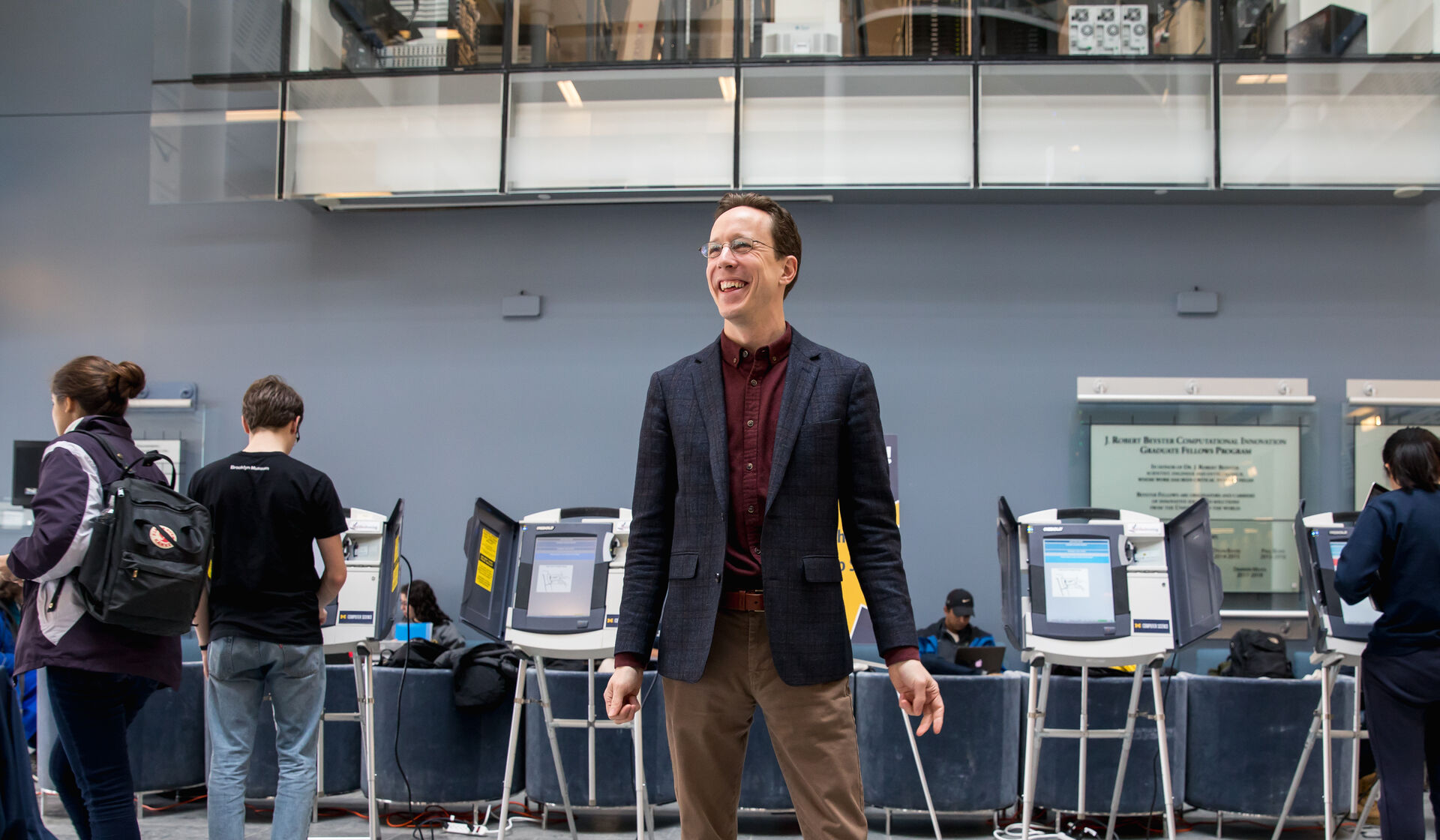“It’s almost always been a foregone conclusion that I was going to do aerospace engineering,” says Dylan Doney, as he reminisces about listening to “Sink the Bismarck” by Johnny Horton with his dad, tinkering in his garage, and seeing his grandfather’s planes as a kid.
Though he may still go on to work with planes someday, Doney, a 2020 Cohort LEAD Scholar, has been working with rockets while studying at the University of Michigan.
Doney is part of the Michigan Aeronautical Science Association, or MASA, a student-run rocketry team that designs, builds, and launches pioneering liquid-fueled rockets. This student organization and the spaces in which they work was a major factor in Doney’s decision to attend U-M.
“Having somewhere like this was really important to me because I really value doing hands-on stuff,” he says.
Doney joined MASA in April 2021 as the team began to plan Clementine, a single-stage sounding rocket that launched on May 14.
He spent most of his time working on the structures and production subteams, developing and creating the full stack test stand. Due to their height, rockets are often assembled horizontally, but the full stack helps the team hold the rocket upright to properly test and prepare for launch.
“We need to make the rocket vertical to test things like how the fuel flows through the pipes because gravity is now a different direction. … It provides an opportunity for the launch crew to train and work with the rocket vertically to test all of our quick disconnects and all of the stuff that’s going to happen,” he says.
Clementine was 20 feet tall, had a 10.75-inch diameter, and was the largest student-built liquid bipropellant rocket launched by a collegiate team in the U.S. One of Doney’s proudest moments of the project was seeing the full stack successfully pressurize and start to rise.
“We spend a lot of time in engineering working on stuff and talking about stuff and drawing on whiteboards and [working in] CAD and everything. But pretty much every engineer will tell you once you have hardware that does something — that’s really cool,” he says.
Doney is also on the board of the Native American Student Association (NASA). He helps the group organize Friday hangouts and the annual Dance for Mother Earth PowWow but really enjoys organizing workshops, such as when an elder came and taught them how to make moccasins.
Like his involvement with NASA and MASA, Doney says the best part about being a LEAD Scholar is the opportunity to build community.
“I think for a lot of minority students on campus, that building community is really important,” he says. “I mean, that’s a lot of what we do at NASA is just those hangouts and other stuff is build community. So I think that’s probably been the best part of it.”
Katherine Fiorillo is the editor of Michigan Alum.





